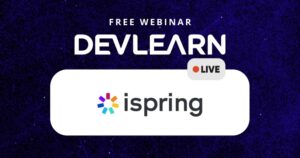Your cart is currently empty!

Leading with EQ: Why Relationship-Centric Workplaces Win in 2025

By Dr. Sheri Duchock & Dr. Maggie Sass
Everyone needs a win, and the win for 2025 is relationship-centric workplaces.
How do we know? A recent report surveyed leadership, HR, and L&D professionals to better understand their priorities, challenges, and opportunities for the upcoming year. Findings in The 2025 State of EQ Report reveal a disconcerting paradox. While collaboration, employee engagement, and customer satisfaction are top priorities for these survey participants, 69% of their organizations struggle with team collaboration.
Sixty-nine percent is an enormous number! This paradox highlights that as organizations navigate increasing complexity, relationship-centric workplaces drive success:
- Breaking down silos stimulates innovation
- Building high employee engagement increases productivity
- Strengthening internal and external relationships bolsters both retention and brand loyalty
The report reveals that caring about employees and customers as humans does not detract from the bottom line but enhances it. The critical driver for each of these relationship-centric strategies is emotional intelligence (EQ).
Lean in to emotional intelligence
Emotional intelligence is the ability to recognize and understand emotions in yourself and others and the ability to use that awareness to manage yourself and your relationships with others. Think of it this way—awareness is what you see and observe, and management is what you do (your behavioral choices). As Emotional intelligence addresses both your individual tendencies and how you interact with others, it consists of four skills:
- Self-awareness
- Self-management
- Social awareness
- Relationship management
The State of EQ Report analyzes data from over 37,000 individuals who completed the Emotional Intelligence Appraisal in 2024. Of these individuals, 32% received a high score in self-awareness, while 31% of respondents were lowest in social awareness (with 23% of this group, well below the average). The data reveals that self-awareness is a strength to leverage. The significant need to focus on social awareness reinforces that relationship-centric workplaces will have an edge in the marketplace.
Talk less; listen more
Currently, people compete and talk over each other in conference rooms to be noticed and stand out. Companies across all industries send out messages in the hope of edging out the competition, without listening enough to their customers. To improve social awareness and be relationship-centric, we must stop talking so much and start listening more deeply. We must absorb not just the words, but also the vocal quality and the body language. We must ask more questions and set aside our own biases. We must step into the shoes of our teammates and our customers.
Break down silos
Stepping into others’ shoes starts with breaking down silos. Unnecessary costs and duplication of efforts result when silos are operating. For example, if marketing, sales, and account management are operating in silos but in contact with the same customer, the latter may receive duplicate or even conflicting messages. Other frustrations could also surface, such as barriers in communication, competing objectives, missed opportunities, lack of trust, and slow innovation.
The power of breaking down silos to increase innovation was demonstrated in 2000 by the CEO of Proctor & Gamble, A.G. Lafley. He did away with silos internally and externally by embracing a “connect and develop” model. Through this model, Proctor & Gamble strengthened relationships within its team and externally with suppliers, competitors, scientists, entrepreneurs, and other partners to create better and more affordable products. After the implementation of the relationship-centric “connect and develop” program, R&D productivity at Procter & Gamble increased by nearly 60%.
Engage employees
In addition to breaking down silos, employee engagement is a key component of relationship-centric work environments. Levels of engagement play a role in retention and earnings. Recent research from McKinsey & Company cited three principal factors employees consider when deciding whether to stay with an organization: being valued by their organization, being valued by their manager, and experiencing a sense of belonging.
Gallup shares that organizations with higher employee engagement perform at higher levels in customer service, productivity, retention, and accident reduction. Notably, businesses with higher engagement also see 21% higher profitability.
Employee engagement addresses the internal relationship challenges; focusing on external relationships builds brand loyalty. Unlike the transactional quality of customer loyalty—which stems from price, rewards programs, and discounts—brand loyalty results from a shared vision, trust, and the assurance of quality. Such connection requires relationship-centric communication—communication that is about the quality of check-ins more than the quantity, communication imbued with authenticity and deep listening. Building trust with customers depends on eliminating multi-tasking, stopping the internal mental chatter, and focusing in the moment. Such heightened Social Awareness with customers positively impacts the bottom line.
How L&D can build social awareness
Let’s look at some opportunities that surface in The 2025 State of EQ Report for learning and development (L&D) professionals to address the reported deficit in social awareness and become more relationship-centered.
Develop a targeted training program to enhance collaboration skills
Effective collaboration requires psychological safety, but such candor can only surface in a relationship-centric team. Empathy and Social Awareness are crucial within teams as the nature of the existing relationships directly affects performance. Can your managers and team members identify whether team conversations are task-focused, feelings-focused, or identity-focused? Can they scan for social cues and adjust their approach to fit the situation?
Facilitate authentic connection opportunities
Does your organization have opportunities for cross-team mentoring, collaborative problem-solving sessions, and structured forums for sharing project lessons and innovations? Too often, remote work is used as an excuse for low social awareness, but distance does not have to impede trust and connection if digital tools are used effectively.
Measure and improve engagement through data-driven results
How do you use employee surveys and pulse checks? These are valuable tools if organizations act on the information received. To build trust, report back to employees how survey data is being used and what specific actions have been taken.
Coach leaders on people-centric leadership skills
Leaders are often promoted for their technical skills and need coaching to manage the people side of their job. How does your leadership training incorporate practical frameworks for responding to employees’ emotions, validating experiences, giving feedback, and navigating real-world difficult conversations?
Implementing training and offering tools that help develop individuals’ social awareness positively impact relationships in a culture. Like any skill, emotional intelligence must be practiced to create sustained behavioral and cultural change. When implemented at a team and/or organizational level, however, shared vocabulary and open dialogue expedite the developmental process. Let’s all win together by stimulating innovation, increasing productivity, improving retention, and bolstering brand loyalty.
Image credit: Edwin Tan








